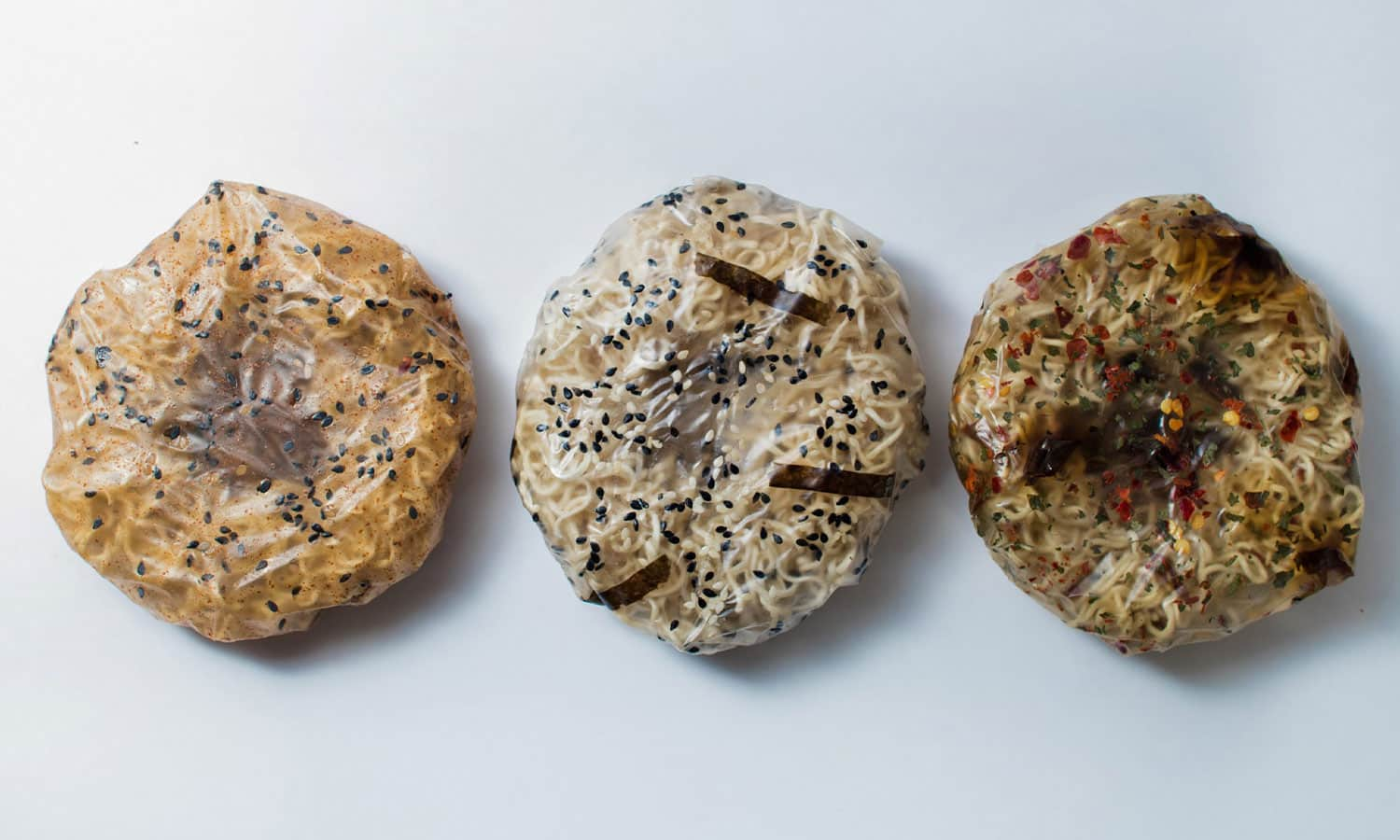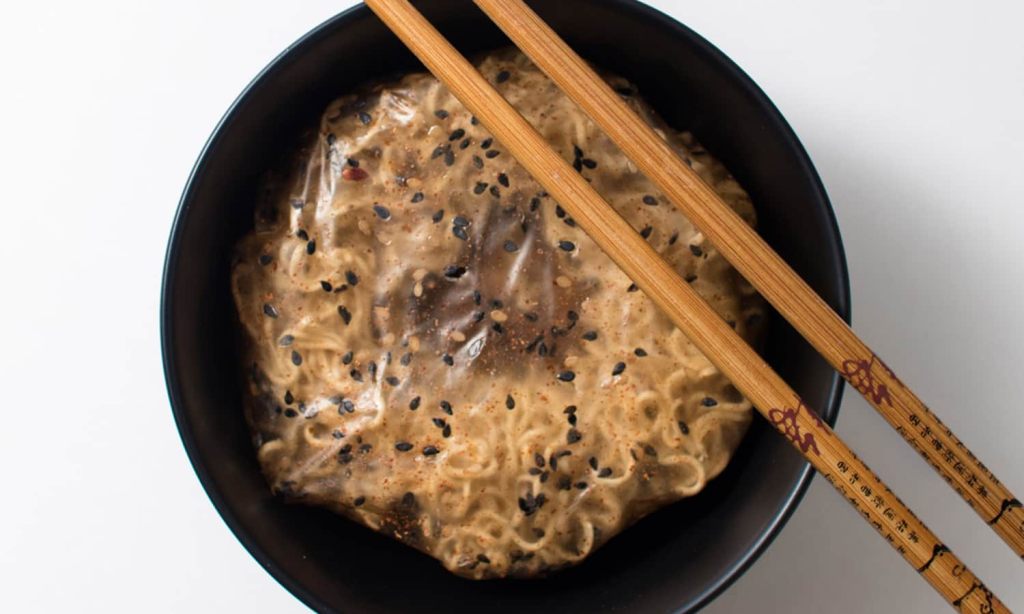During Plastic-Free July, we’re challenging ourselves, our friends and families, and our households to refuse single-use plastics and be part of the solution to plastic pollution around the world.
When it comes to food and the ways we eat at home, we’re already doing what we can to prioritise packaging-free produce, recycle and reuse what we’re having to buy and purchase foods in larger quantities to avoid wasting resources.
But there is, of course, more work to be done in this area, and one student from London is working hard to find a solution to the wasteful nature of food packaging, and in particular, the plastic that encases instant ramen.
Holly Grounds is a product design graduate from Ravensbourne University. In seeking a solution to reducing the packaging around instant ramen packets and all its flavour components within, she developed a flavourful, edible casing that disintegrates to make up the broth when it meets boiling water.
The transparent and rather pretty casing is made up of a “flavourless biofilm” comprised of potato starch, glycerin and water. As Grounds explains to Dezeen, the formula was fairly easy to come up with, and in her home kitchen too.
“I was able to do all the testing and manufacture in my kitchen as the process is very simple,” grounds told the publication.
“The ingredients are blended and heated until the mixture is at the right thickness. At this point, I add the spices and flavourings before pouring it into a mould to set for 24 hours.”
Seaweed, black sesame seeds, chilli; the casing is able to safely store flavouring for the noodles, while simultaneously keeping the contents within from going stale.

Grounds was inspired to find a solution to the plastic packaging problem of instant ramen after many long nights spent eating the supermarket staple while studying.
According to Dezeen, she felt there to be an irony in a meal that takes minutes to make, but is wrapped in packaging that takes more than eighty years to decompose.
But she found success in her testing, and while developing her formula, Grounds discovered that her noodle packs actually saved the cook time in opening flimsy packages and emptying the sachets.
She’s proud to acknowledge now that her invention is both the more convenient and far more environmentally conscious choice, compared to ramen packets already on the market.
“Convenience has become an inevitable part of everyday life but it often comes at a cost to the environment,” she told Dezeen. “The issue is that the world is not only confronting a rapidly growing mountain of plastic but also an even greater mountain of apathy.
“That’s why it was important to me to make the convenient choice the sustainable one. If the quick option for meals or snacks is eco-friendly, consumers can help the planet perhaps without even knowing.”
Grounds’ ramen packaging is yet to hit shelves, though we sincerely hope her product is considered for large-scale production soon.







